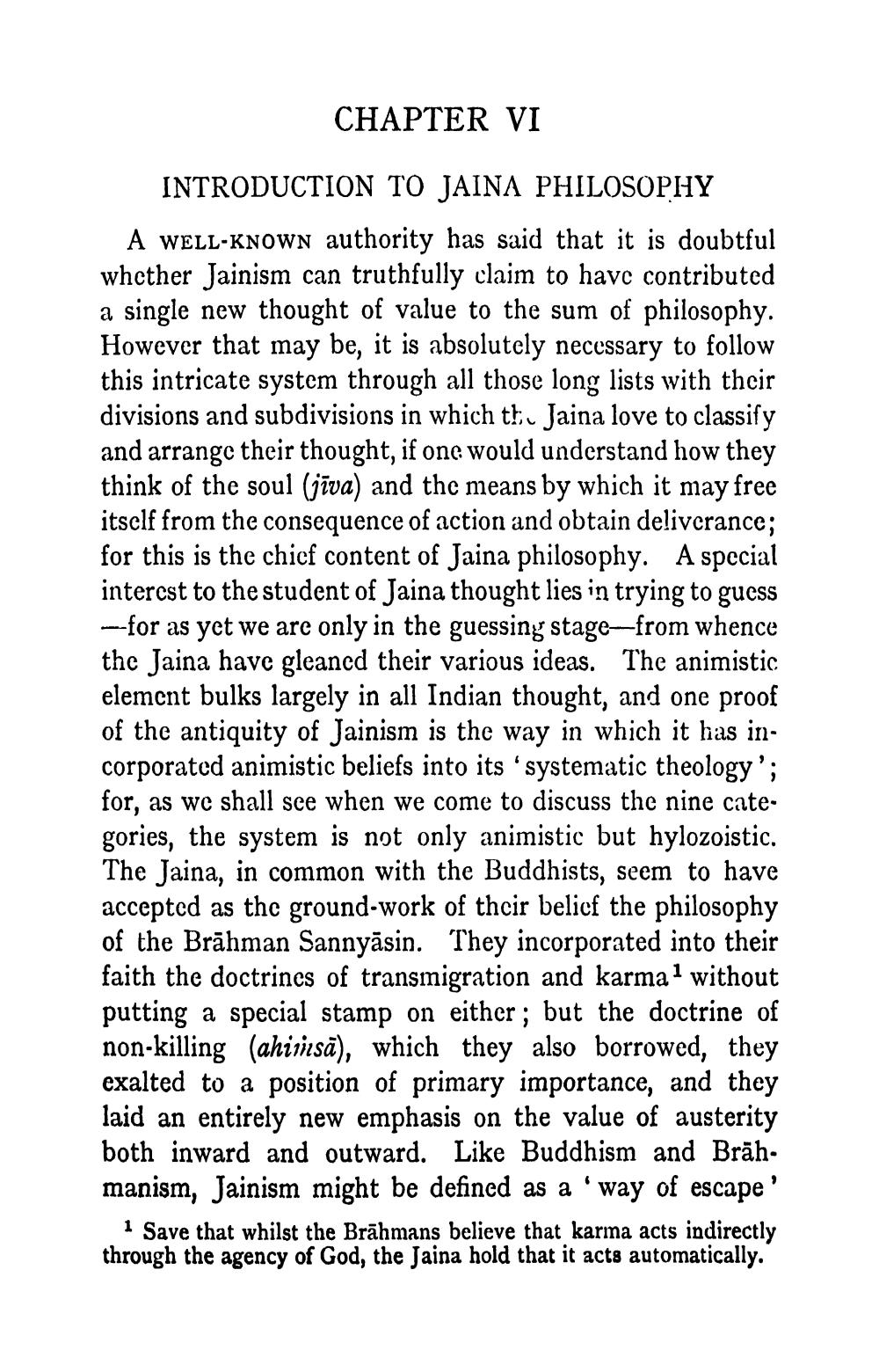________________
CHAPTER VI
INTRODUCTION TO JAINA PHILOSOPHY
A WELL-KNOWN authority has said that it is doubtful whether Jainism can truthfully claim to have contributed a single new thought of value to the sum of philosophy. However that may be, it is absolutely necessary to follow this intricate system through all those long lists with their divisions and subdivisions in which the Jaina love to classify and arrange their thought, if one would understand how they think of the soul (jīva) and the means by which it may free itself from the consequence of action and obtain deliverance; for this is the chief content of Jaina philosophy. A special interest to the student of Jaina thought lies in trying to guess --for as yet we are only in the guessing stage-from whence the Jaina have gleaned their various ideas. The animistic element bulks largely in all Indian thought, and one proof of the antiquity of Jainism is the way in which it has incorporated animistic beliefs into its 'systematic theology'; for, as we shall see when we come to discuss the nine categories, the system is not only animistic but hylozoistic. The Jaina, in common with the Buddhists, seem to have accepted as the ground-work of their belief the philosophy of the Brahman Sannyasin. They incorporated into their faith the doctrines of transmigration and karma1 without putting a special stamp on either; but the doctrine of non-killing (ahimsa), which they also borrowed, they exalted to a position of primary importance, and they laid an entirely new emphasis on the value of austerity both inward and outward. Like Buddhism and Brahmanism, Jainism might be defined as a 'way of escape'
1 Save that whilst the Brahmans believe that karma acts indirectly through the agency of God, the Jaina hold that it acts automatically.




